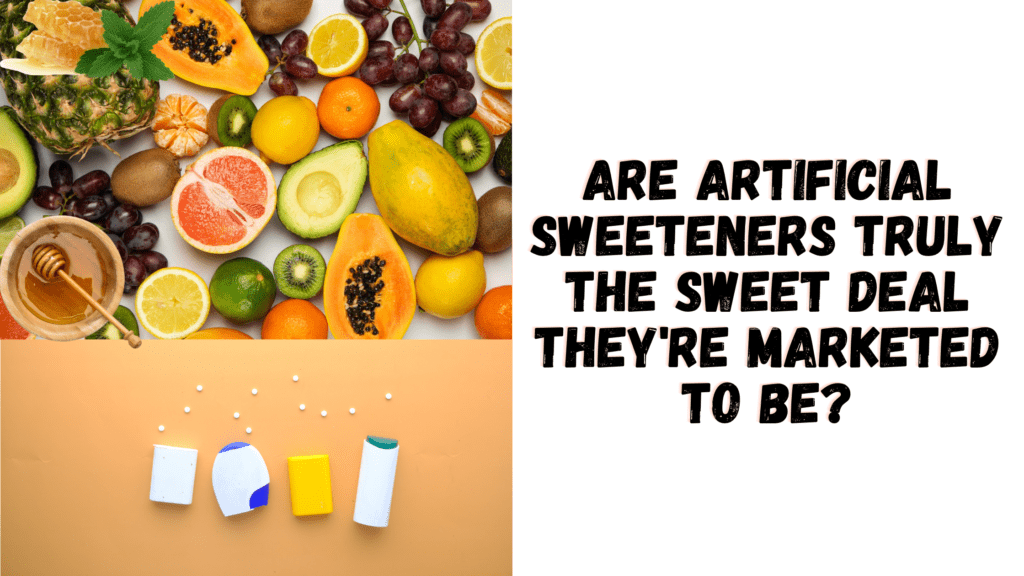Artificial Sweeteners: A Brief History of Sweeteners
Human beings have a natural preference for sweet-tasting foods and drinks. The first sweetener used was honey in ancient Chinese and Greek civilisations. Then saccharose from sugar cane was used. Sugar beets were used throughout the World Wars as a supply of saccharose. In 1879 saccharin was discovered by chemists Dr Fahlberg and Dr Remsen. As saccharin was low in cost to manufacture and sugar was becoming increasingly hard to come by saccharin was used a lot in the World Wars as well. However, it has a bitter aftertaste and in the 1950s a new sweetener, called cyclamate was created. This was mixed with saccharin and this created the popular sweetener “Sweet’n’Low”. In 1981, Aspartame was approved in the USA and this became “Nutrasweet”. New artificial sweeteners have come on the market since the 1980s and the diet and food industry have been using them more and more. Because of the bitter aftertaste, many products will have a mixture of artificial sweeteners. Artificial Sweeteners (AS) can be between 200 to 200,00 times stronger tasting than sugar and therefore only a small amount is needed to get a desirable sweet taste.
Artificial Sweeteners and Obesity
40% of the adult world population is obese or overweight. This is leading to an increase in the number of deaths caused by nutrition-related diseases such as heart disease, strokes and cancer. High sugar intake is a significant contributor to being overweight or obese. Sweeteners have been marketed in a way that you can have all the sweet foods that you desire and lose weight.
The World Health Organisation’s Stand on Artificial Sweeteners
The World Health Organisation (WHO) has recently updated its guidelines on AS or what they call non-sugar sweeteners (NSS). WHO has looked at the research and recommended that AS should not be used for weight loss or to decrease the risk of diet-related diseases.
Studies have shown that in the short term, AS can help with weight loss but in the long term, AS is associated with a high BMI/obesity. In fact, long-term use of AS has been shown to be associated with cardiovascular disease and type 2 diabetes. There are not as many studies done on children or pregnant women. The limited studies in children found that in children if sugary drinks are substituted with drinks that contain AS, there is a decrease in tooth decay but there is no significant long-term effect on fat percentage. High AS consumption during pregnancy has been associated with preterm labour and an increased risk of the child having lower mental ability, asthma or allergies.
Artificial Sweeteners and Cancer
Studies have shown sweeteners (specifically saccharin given in high doses) to cause bladder cancer in rats. In humans, over 1.73g of sweeteners need to be consumed before the risk of bladder cancer is slightly increased. Considering the average portion of sweeteners is less than 0.01g it would be difficult to have over 1.73g on a regular basis. Apart from these animal studies there does not seem to be any further evidence regarding cancer risk. In fact, Aspartame has been shown not to increase cancer risk. However, the use of sweeteners has only significantly increased in the past couple of decades, with new sweeteners being created in the 1980s. Therefore, more research over many years is needed to fully understand the health risks that sweeteners pose to us.
Artificial Sweeteners and the Microbiome
The microbiome is an aspect of health that is becoming very important and vital to not just our physical health but also our mental health. Our diet has a substantial effect on our microbiome. AS have been shown to change our microbiome which affects our immune system and can create inflammation. (Look out for a future blog on the Microbiome if you would like to learn more about this).
Reducing Artificial Sweeteners in Your Diet
As a society the amount of people addicted to sugar has increased and AS sweeteners are seen as a way to have your cake and eat it. However, the effect on our weight, microbiome and overall health shows AS are not the magic answer to decrease the amount of sugar we have in our diet but still get the sweet taste we crave. Ways to decrease the amount of AS in your diet is to:
- Decrease the amount of ultra-processed food in your diet as these types of foods are often made more palatable and satisfying by adding AS and are marketed as healthy as they are low in sugar.
- Decreasing the number of drinks that contain AS that you have and increase your water intake
- Use natural sources of sugar such as fruit. For example, instead of putting sugar in your porridge, you could use berries instead. Not only are you getting a natural and healthier sugar source you can also get one of your 5 a day.
In Conclusion
Sweeteners are so much sweeter than sugar that it can be difficult to reduce the amount of AS in your diet without feeling like everything tastes different and not in a good way! Taste buds regenerate every couple of weeks so if you can hang in there for 2 weeks while your taste buds and body adjust and change you will be the better for it.
References:
- Weihrauch, M.R; Diel. V. Artificial Sweetners-do they bear a carcinogenic risk? Annals of Oncology, Volume 15, Issue10, October 2004, Pages 1460-1465
- Basson, A.R.; Rodriguez-Palacios, A.; Cominelli, F. Artificial Sweeteners: History and New Concepts on Inflammation. Frontier Nutrition. 2021, 8, 746247.
- https://www.who.int/news/item/15-05-2023-who-advises-not-to-use-non-sugar-sweeteners-for-weight-control-in-newly-released-guideline (last accessed on 15/06/23)
Thank you for taking the time to read our blog on artificial sweeteners.
If you found this article on Artificial Sweeteners informative, we invite you to explore our other Blogs posts




















































0 Comments